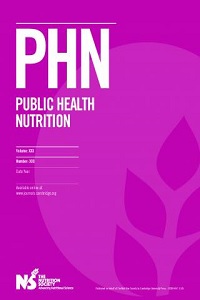The potential contribution of yellow cassava to dietary nutrient adequacy of primary-school children in Eastern Kenya; the use of linear programming
Introduction of biofortified cassava as school lunch can increase vitamin A intake, but may increase risk of other deficiencies due to poor nutrient profile of cassava. We assessed the potential effect of introducing a yellow cassava-based school lunch combined with additional food-based recommendations (FBR) on vitamin A and overall nutrient adequacy using Optifood (linear programming tool).
Cross-sectional study to assess dietary intakes (24 h recall) and derive model parameters (list of foods consumed, median serving sizes, food and food (sub)group frequency distributions, food cost). Three scenarios were modelled, namely daily diet including: (i) no school lunch; (ii) standard 5d school lunch with maize/beans; and (iii) 5d school lunch with yellow cassava. Each scenario and scenario 3 with additional FBR were assessed on overall nutrient adequacy using recommended nutrient intakes (RNI).
Eastern Kenya.
Primary-school children (n 150) aged 7–9 years.
Best food pattern of yellow cassava-based lunch scenario achieved 100 % RNI for six nutrients compared with no lunch (three nutrients) or standard lunch (five nutrients) scenario. FBR with yellow cassava and including small dried fish improved nutrient adequacy, but could not ensure adequate intake of fat (52 % of average requirement), riboflavin (50 % RNI), folate (59 % RNI) and vitamin A (49 % RNI).
Introduction of yellow cassava-based school lunch complemented with FBR potentially improved vitamin A adequacy, but alternative interventions are needed to ensure dietary adequacy. Optifood is useful to assess potential contribution of a biofortified crop to nutrient adequacy and to develop additional FBR to address remaining nutrient gaps.

